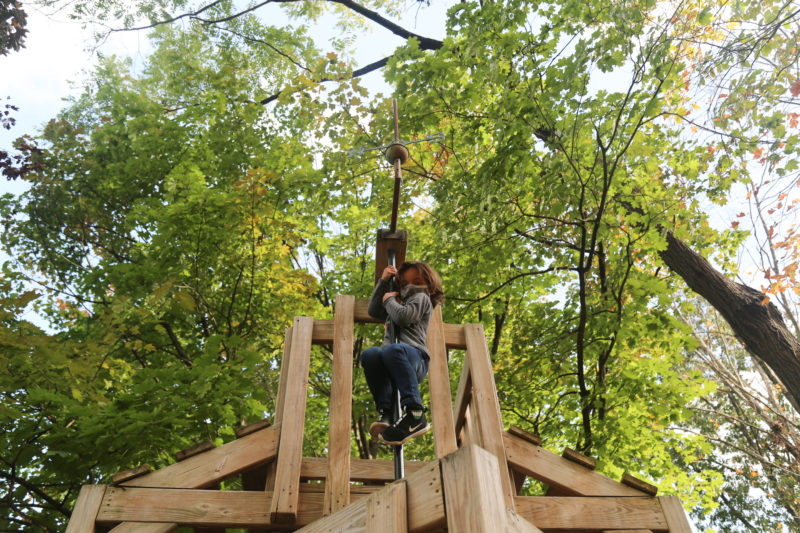Springtime buds and blossoms are emerging on campus, and the children have been admiring the trees and the shelter they provide for birds and wildlife. To learn about the huge, extraordinary trees in the world’s rain forests, the children had a virtual visit from Meg Lowman, or “Canopy Meg,” one of the first biologists to climb to top of the trees to study the forest from a new vantage point. Meg discovered an incredibly rich ecosystem in the canopy, one where half of all terrestrial animals live. She now works to protect this “eighth continent” from being destroyed before it can even be explored.
Meg told the children that if they love climbing trees, they can grow up to be arbornauts, or explorers of trees. Compared to space exploration or marine biology, the study of treetops is very new; it wasn’t until the 1980’s that anyone climbed a tree for research! Meg had to invent her own tool kit for climbing tall trees: a slingshot to propel a rope over a high branch, mountain-climbing ropes and a harness made out of seat belts. Once in the treetops, she discovered that the forest canopy teems with life. To move around in and explore this realm, Meg kept coming up with new tools: a hot air balloon with a giant raft floating beneath it, for collecting samples across the forest, and a construction crane to reach the topmost leaves with the bucket arm. Her most important invention was canopy walkways, which allow more people to visit the treetops and make it possible to spend the night in the trees and observe insects that only come out in the dark.
With canopy walkways, people of all ages can explore the trees and learn to be citizen scientists. Meg showed pictures of a class of third graders that made a field trip to a canopy walkway in Florida. They drew pictures of leaves with unusual bite holes—and helped discover a new species of weevil. Meg also created a program that teaches people in wheelchairs to climb trees using special harnesses. These arbornauts found a new species of tardigrade, or water bear, in droplets they collected from the upper branches.
Trees and forests keep us alive: they provide oxygen and fresh water, conserve the soil and store carbon in their trunks. But we’ve already cut down half of the trees on Earth. How are we going to save the ones that are left? Meg gave the example of Ethiopia, where 97% of the trees have already been cut down, except for small patches around churches. To save these last remnants, she started TREE Foundation, which helps build stone walls around the church forests to protect the trees. A “real-life Lorax,” Meg has shown that building canopy walkways helps preserve the rain forest in places like the Peruvian Amazon; the walkways create income for local people through tourism rather than logging. A canopy walkway she built in a conservation zone in Malaysia was recently named a Unesco World Heritage site.
Meg sees hope for the world’s forests in children becoming curious about life in the treetops from books like The Leaf Detective. She shared that her favorite tree is the strangler fig, the only tree that grows from the top of the canopy down to the forest floor. And her favorite animals are leaf-eaters—mammals like koalas and sloths that manage to grow to a large size by eating only leaves. There is still so much to discover about the “eighth continent”—from unknown species to medicinal plants—and Meg Lowman hopes our budding explorers and scientists will be inspired to love and protect the trees and forests around them.
Enjoy the blossoming signs of spring in the trees!
Maureen

